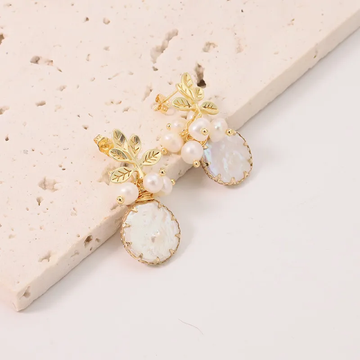Exploring the Symbolism and Cultural Significance of Stone Bracelets
Stone bracelets have transcended mere adornment, evolving into meaningful symbols deeply rooted in history, spirituality, and personal identity. Across cultures, stones are imbued with symbolic meanings, healing properties, and protective qualities, making each bracelet a wearable narrative. Below, we delve into the rich tapestry of symbolism and cultural contexts surrounding these timeless pieces.
Unveiling the Spiritual and Healing Symbolism
Throughout history, stones have been revered for their perceived metaphysical properties, influencing emotional, physical, and spiritual well-being:
- Protection and Grounding: Stones like black tourmaline, obsidian, or hematite are often associated with shielding against negative energies and fostering emotional stability. Wearing such stones in bracelet form is believed to create a protective barrier, ideal for those seeking resilience in challenging environments.
- Balance and Harmony: Gemstones like moonstone, amazonite, or rose quartz are linked to emotional equilibrium and inner peace. These stones are thought to harmonize energies, making them popular choices for bracelets aimed at reducing stress or nurturing self-love.
- Manifestation and Abundance: Citrine, pyrite, or green aventurine are frequently tied to prosperity and goal-setting. Wearing these stones is believed to amplify intentions, attracting opportunities and fostering a mindset of abundance.
Cultural and Historical Significance Across Traditions
Stone bracelets hold unique meanings in various cultural contexts, reflecting beliefs, rituals, and societal values:
- Eastern Traditions: In Chinese culture, jade bracelets symbolize purity, nobility, and longevity. Often passed down through generations, they are considered heirlooms that embody familial bonds and moral virtues. Similarly, in Hinduism, rudraksha beads (derived from seeds) are strung into bracelets for spiritual protection and meditation aid.
- Indigenous and Tribal Practices: Many Native American tribes craft bracelets from turquoise, coral, or shell, each stone carrying tribal-specific symbolism. For example, turquoise is revered as a sacred stone of protection and healing, while coral represents life force and vitality. These pieces often serve as talismans in ceremonies or daily life.
- Ancient Civilizations: The Egyptians adorned themselves with lapis lazuli, carnelian, or malachite bracelets, believing these stones connected them to deities or the afterlife. Similarly, the Greeks and Romans associated amethyst with sobriety and clarity, often wearing it in jewelry to ward off intoxication and promote wisdom.
Personalized Meanings and Modern Interpretations
Today, stone bracelets are increasingly chosen for their aesthetic appeal and personal resonance, allowing wearers to craft their own narratives:
- Birthstones and Zodiac Signs: Many opt for bracelets featuring their birthstone or a stone aligned with their zodiac sign. For instance, those born in October might choose opal or tourmaline, believing these stones enhance their innate traits or offer cosmic guidance.
- Milestone and Intentional Jewelry: Stone bracelets are often gifted to commemorate milestones like graduations, marriages, or recoveries. Each stone’s meaning—such as peridot for renewal or garnet for passion—adds depth to the gesture, transforming the piece into a cherished keepsake.
- Mindfulness and Wellness Practices: In contemporary wellness culture, stone bracelets serve as tactile reminders of intentions or affirmations. For example, a bracelet with labradorite (for transformation) might accompany a period of personal growth, while a clear quartz bracelet could symbolize clarity during decision-making.
Navigating Cross-Cultural Adaptations and Hybrid Symbolism
In an increasingly globalized world, stone bracelets often blend traditions, creating hybrid meanings that resonate across borders:
- Fusion Designs: Bracelets combining stones from different cultures—such as a jade bead paired with a rudraksha seed—reflect a wearer’s appreciation for diverse spiritual practices. These designs celebrate unity and inclusivity.
- Eco-Conscious and Ethical Choices: Modern consumers often prioritize stones sourced ethically or sustainably, infusing their purchases with values like environmental stewardship or fair trade. A bracelet made from recycled metals and responsibly mined stones becomes a statement of conscience.
- Digital Age Interpretations: Online communities and social media platforms have democratized access to stone symbolism, allowing wearers to explore meanings beyond their cultural origins. A person might adopt a stone’s symbolism after reading about it online, creating a personal connection that transcends tradition.
By understanding the symbolic and cultural layers of stone bracelets, wearers can select pieces that resonate deeply with their beliefs, experiences, or aspirations. Whether rooted in ancient lore or modern intent, these bracelets serve as reminders of identity, purpose, and the enduring power of nature’s gifts.







